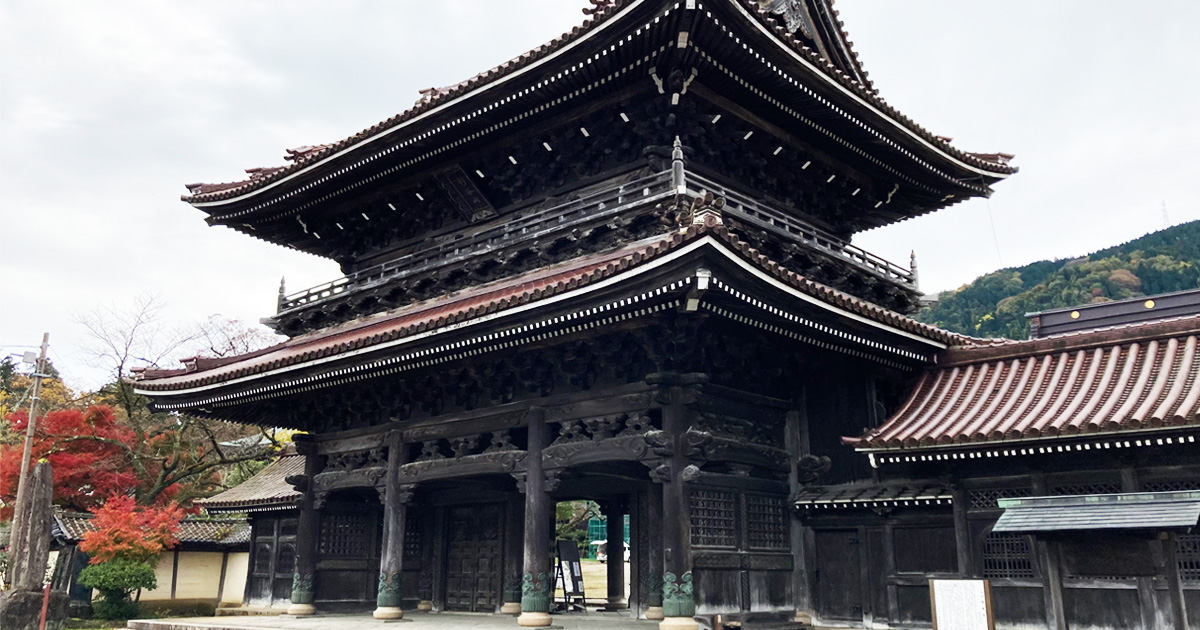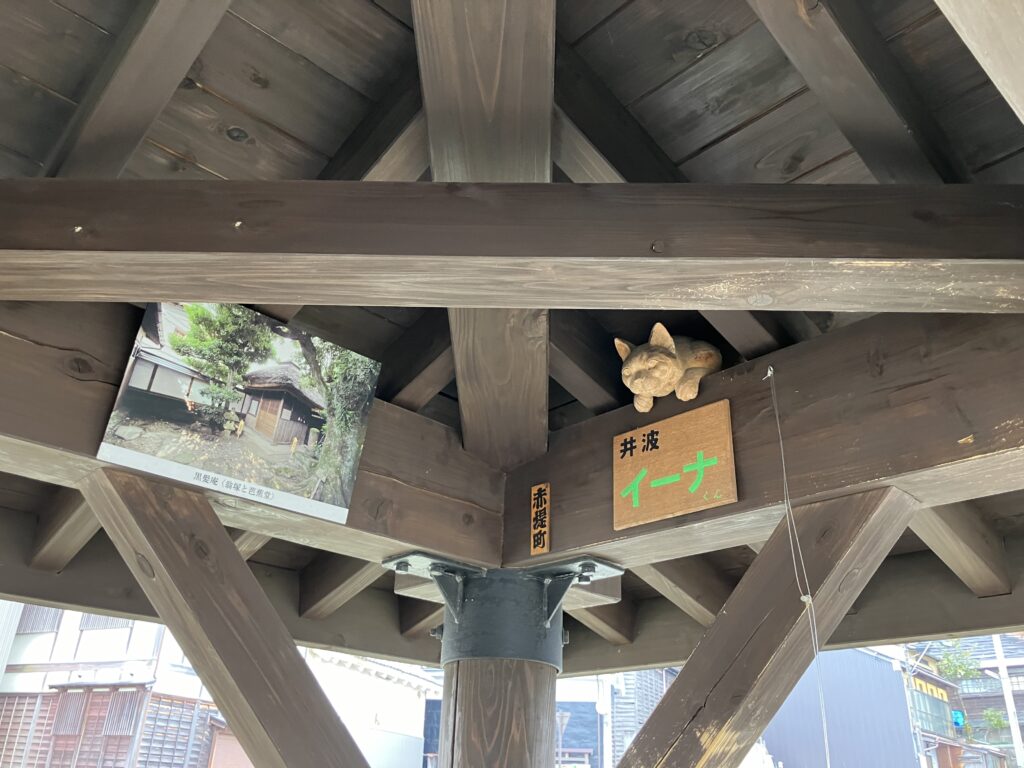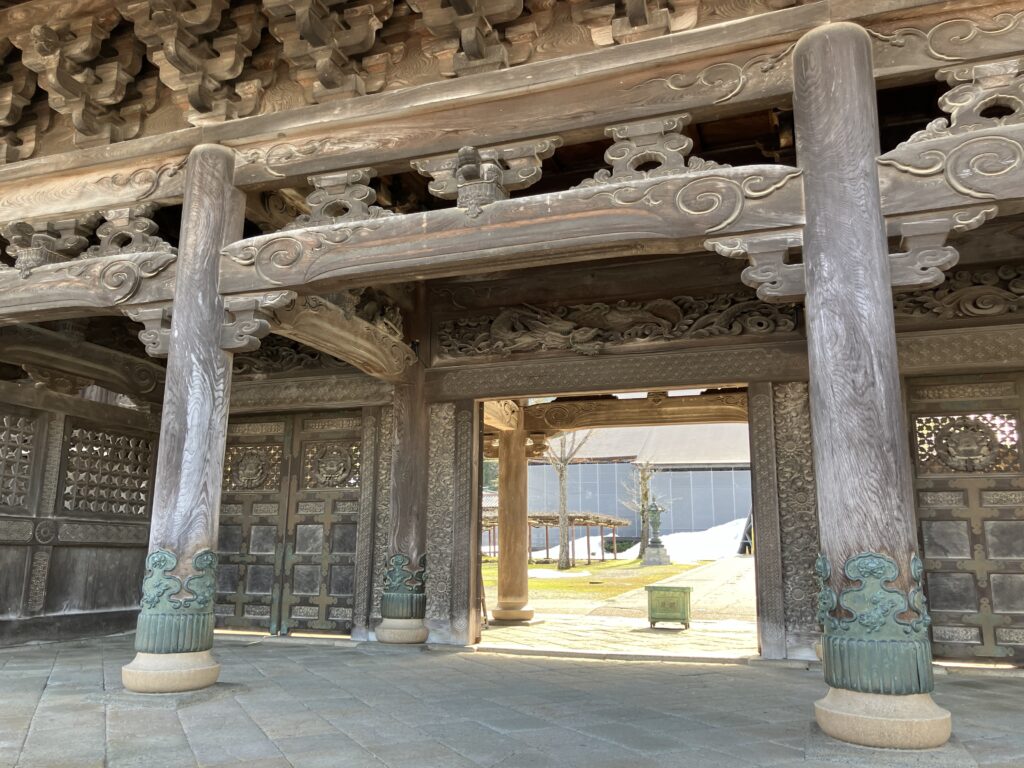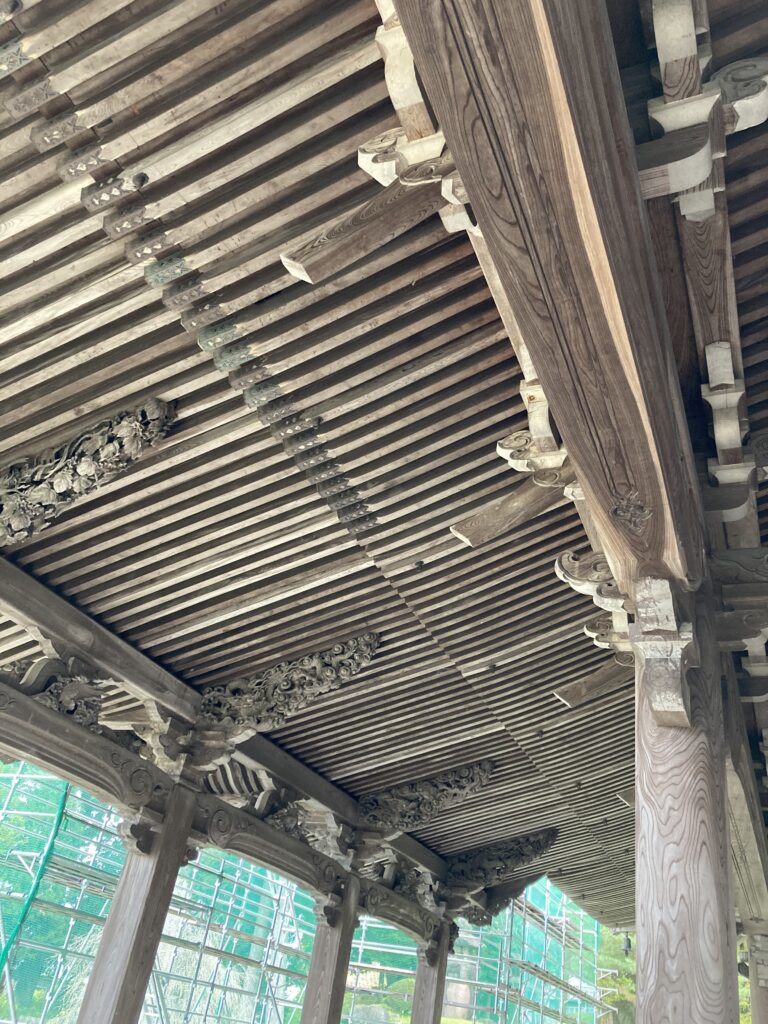[Inami] How to stroll in Japan’s best wood carving town

Inami, which has flourished as a temple town, is located south of Tonami Plain in Toyama prefecture. The town is at the feet of Mt. Yaotome and has a stone-paved street lined with wood carving workshops.
Yokamachi Street – Let’s visit the shops of sculptors
There are 120 wood carving workshops along Yokamachi street which accommodates about 200 wood carving craftsmen. Everything from doorplates to bus signs is wood carvings made by the master sculptors.
Wooden carved cats
Expressive cats are hiding leisurely in various places in town. Take a leisurely stroll and try to find them.

Sake-cup making experience
At some places in Inami, you can have sake cup making experience. No worries, even if you have no experience, you can enjoy it. You will use professional tools such as chisels and mallets to make your very own sake cup. Only cypress wood is used as the material, and as you carve, the scent of cypress fills the air around you.
Japanese Cypress
Cypress has a composent called “phytoncides” that is released when the tree is injured or receive stimulation. When we smell phytoncides we can get the same effects from forest bathing which offers relaxation, good sleep due to declining tension in the sympathetic nerves and improves liver function. It can also soften the rough flavor of sake. Moreover, cypress has an effect to protect us from insects and deodorization so in Japan, the small pieces of cypress board is commonly placed in the rooms, entrance, even in the shoes shelve.
Wakakoma Sake Brewery
You can also enjoy tasting with the sake cup you’ve just made at the workshop. When you pour sake into the cup, you can enjoy the fragrance of cypress.
[Note]
– If you want to have it as it is for a long time, don’t use detergent when you wash it, otherwise the fragrance will disappear easily.
– After using the cup frequently, the fragrance will gradually fade and the color of the cup will change slightly.
Zuisen-ji Temple – A splendid temple to express the utopia.
Zuisen-ji Temple is a temple from the Ikko sect. It was built in 1390 A.D. by the Buddhist Saint Shakunyo. It is characterized by the elaborate carving on the main gate called “Sanmon”and other works in the temple. The temple consists of a gate and two main buildings which are called Hondo and Taishi-do. They are mainly used by the local people for Buddhist services such as periodical memorial ceremony.
Sanmon Gate(Main Gate)
Sammon Gate is designated as an Important Cultural Asset of Toyama prefecture. It is made of multi-layered zelkova, with a width of 65 feets (20.3 meters), depth of 50 feets (15.5 meters), and height of 57 feets (17.4 meters). A dragon is carved on the beam of the gate. This elaborate work was carved by the sculptor Maekawa Sanshiro from Kyoto. Zuisen-ji Temple was hit by a huge fire in 1879 A.D. and according to the local legend, the carved dragon climbed a nearby pine tree and spewed water, leaving Sanmon Gate unburned.

Rain water pots
They were actually the protective iron cover of the water pipe connected to a nearby dam. In 1970 when the construction of the dam was completed and the water came not to flow in anymore, the cover ended its role and was donated to Zuisenji Temple as a rainwater bowl. The holes in the edges are left over from when the lid was bolted on.
Hondo Hall (Main hall)
Hondo Hall is the largest wooden building in Hokuriku area. When you go up the stairs, you will see two layers of boards laid out on the veranda. As they have been quite tanned, it looks like the same wooden board, but the upper one is made of horse chestnut tree while the lower one is made of a red zelkova tree. The shrine carpenter intentionally placed the horse chestnut board because it could effectively reflect the sunlight to make the main hall look brighter.
When you enter the main hall, you will see the main image in front of you. If you look up, you can see golden sculptures that appear to be floating on the transom. The sculpture is coated with lacquer, and then gold leaf is placed on top of it. The main hall represents a paradise or a glittering world. The gold color amplifies the look of the sculpture as if it’s coming towards us.
Taishi-do Hall
The building was named after Prince Shotoku Taishi. It is the largest hall in Japan where Prince Shotoku Taishi is enshrined. On the contrary to the Main Hall, the Taishido Hall looks modest with the carving made from plain wood instead of gorgeous golden surface.
Prince Shotoku Taishi (574 A.D. – 622 A.D.)
He served as regent for Emperor Suiko and is famous for legends such as being able to distinguish the voices of ten people at once. He was the person who established the national system, including the 12-tier crown, the 17-article constitution and promoted the centralization of power by the emperor.
Another highlight is the roof reinforcements.

They were carved in three-dimensions with a watermark on the inside. This method is called basket carving. It is so decorative that it is hard to believe that it is a reinforcement material for the roof. Aside from the roof reinforcements, there are other detailed carvings all over the building. By finely tuning the angle and distance, all of them look just right even if you are looking up from below.
